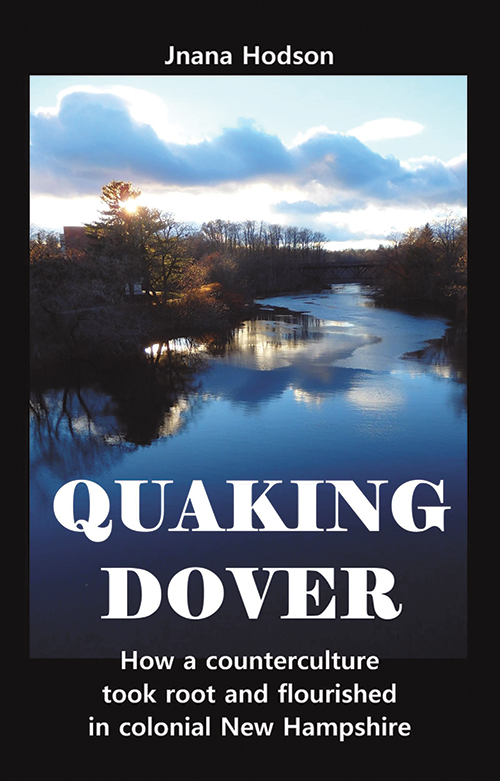
Quaking Dover: How a Counterculture Took Root and Flourished in Colonial New Hampshire
Reviewed by Marty Grundy
March 1, 2023
By Jnana Hodson. Self-published, 2022. 252 pages. $19.95/paperback; $4.95/eBook.
What was it about Dover, N.H., on the Piscataqua River separating it from Maine, that enabled early Friends ministers to establish first a toehold and then to gather a third of the populace into the meeting, in spite of New England’s violent opposition to Quakers? This book offers an alternative history to the usual Puritan-centric stories. Jnana Hodson examines those who chafed at the theocratic restrictions and dogmas, and who objected to them and resisted in various ways. The resistance was exemplified by the festivities at Merrymount, the popularity of Anne Hutchinson’s teaching, and the readiness of some to hear and aid the first Quaker missionaries.
The author likes to connect the dots, as he says. Drawing on David Hackett Fischer’s 1989 Albion’s Seed: Four British Folkways in America, Hodson notes that settlers in Salem, Mass., and Dover were from Devonshire, with its culture of hospitality, whereas most of the Puritans came from East Anglia with very different folkways. Of course history is not just the result of the larger, impersonal scope of folkways, economic and political forces, or social class. It is lived by individuals who are part of families, individuals who make personal choices and influence those with whom they live. So Hodson also traces family connections showing that both a bold embrace of Quakerism and bitter persecution of the disturbers of the status quo tended to run in families.
Written as a history of Dover and of Dover Meeting, the book is also filled with verbal asides as the author comments on what he is discovering and sharing with the reader. He offers various versions of events and cheerfully acknowledges when he can’t find facts to fill in gaps. Especially toward the end, he offers genealogy tying together some of the major early families.
Dover did not escape the bloody violence of the so-called King Philip’s War. Friends and non-Friends were killed, while some of the former carried arms, and presumably none were innocent of taking land and possibly mistreating the Indigenous inhabitants. The book is less clear about specific wrongs inflicted by early residents of Dover and the other colonial settlements around the Piscataqua. Documentation may not exist, and older accounts tend to be very one-sided: murderous Indians and innocent colonists.
The book is an artifact of COVID in that it was created using what is available on the web, including secondary sources, much older published accounts, and summaries of meeting minutes, rather than deciphering the actual holographic minutes in the archives at the University of Massachusetts Amherst. As anyone knows who has tried to do historical research recently, there is a gratifyingly wide variety of materials available electronically. Hodson has done a good job of mining; juxtaposing; and, as he says, “connecting the dots” to produce a somewhat speculative but eminently well-argued and documented account of how a counterculture took root and flourished in colonial New Hampshire.
Marty Grundy is a member of Wellesley (Mass.) Meeting and a fairly recent inhabitant of New England.



Comments on Friendsjournal.org may be used in the Forum of the print magazine and may be edited for length and clarity.